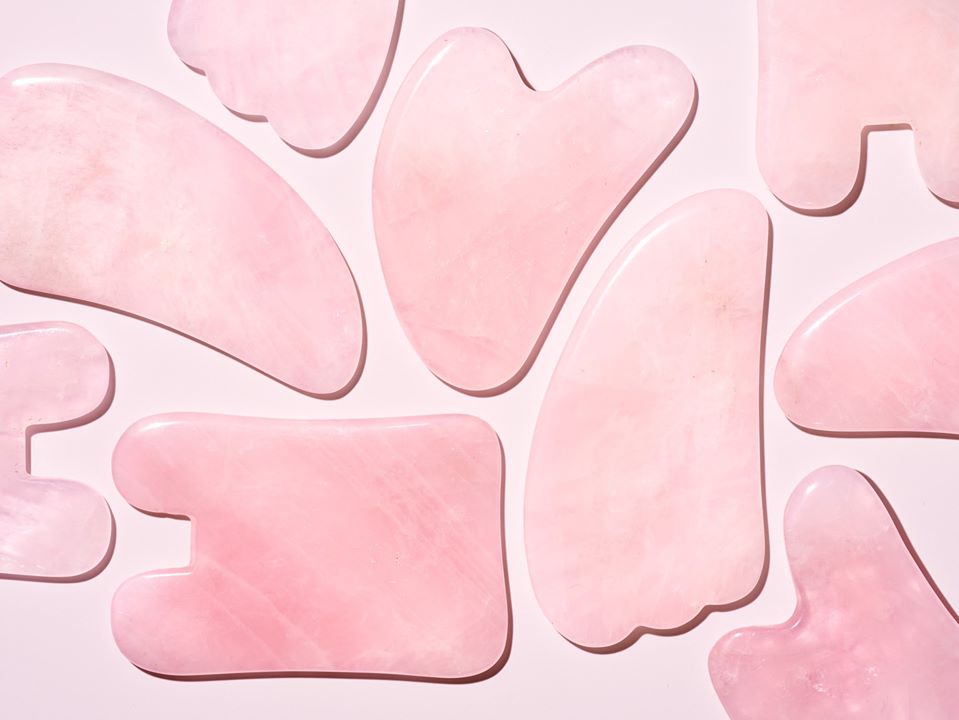Unless you’ve been literally living under a rock, you already know about the benefits of face rollers. But there’s a new technique in town and it’s called gua sha. But it isn’t exactly new. In fact, gua sha predates acupuncture.
So what exactly is it?
Don’t be alarmed by the fact that gua sha translates to “scraping.” It really isn’t as harsh as it sounds.
“Traditionally speaking, gua sha is a technique used in traditional Chinese medicine that involves ‘scraping’ the skin with thin tools to increase circulation and decrease stagnation in the body to boost health and healing,” explains Herbivore Botanicals Creative Content Specialist Wren McMurdo Brignac.
All that scraping creates microtrauma to induce healing. “In skin care, gua sha facial tools are inspired by this technique because they also help increase circulation and move stagnation, but they’re meant to be used much more gently than in traditional Chinese medicine.”
Like with face rollers, gua sha tools come in a variety of materials. When choosing a crystal facial tool, make sure to take note of the metaphysical benefits of each gemstone. “For example, jade stimulates and inspires, rose quartz nurtures the heart, lapis helps to clear the mind and amethyst inspires peacefulness and calm,” says Brignac.
The tools also come in a variety of shapes. “When choosing a shape, go with the tool that looks like it will feel the best to use on your particular face. A teardrop shape is great for making long, sweeping strokes, while a heart or puzzle piece shape is best for sculpting focused areas like the nose and brows.”
How does it work?
First, you need to cleanse your face. Then apply your favorite face oil and grab your gua sha tool. “Using the concave edge of the tool, hug the brow bone and move outward toward the temple. With any linear edge of the tool, sweep the surface of the skin in short strokes upward toward the hairline. Continue this motion across the forehead to the temples,” says Brignac.
“To sculpt the eye area, use any outwardly curved edge of the tool and beginning at the inner corner of the eye, gently sweep along the outer eye socket toward the temple. To sculpt the cheekbones, use a concave edge of the tool and follow along the cheekbone with broad strokes from the nose outward toward the temple. Repeat the motion across the entire cheek area with the linear edge. To sculpt the jaw, begin at the center of the chin and massage in one continuous motion along the jawbone to relieve muscle tension. Once finished with the jawline, make one long sweeping motion from the center of the hairline down to the upper jaw and earlobe. Finally, move the tool from below the earlobe down to the neck toward the collarbones to encourage drainage to the lymph nodes.”
Don’t forget your body.
Gua sha also works great on the body, according to herbalist, acupuncturist and founder of Vie Healing Mona Dan, LAc., MTOM. “I recommend coconut oil for the body and jojoba oil for the face. For chronic issues, focus on pressing hard and swiftly moving in one direction about 15 times and waiting a few seconds and starting again. For less chronic and more for lymphatic drainage and an immune boost, less pressure and moving swiftly is beneficial.”
Both experts recommend using the tool daily or whenever your face or body feels puffy or stagnant.
“Besides helping preserve a youthful appearance of the skin, gua sha can help ease tension and increase skin’s ability to absorb products,” says Brignac. Many people even see results after their first session. But consistent use is needed to maximize benefits.




